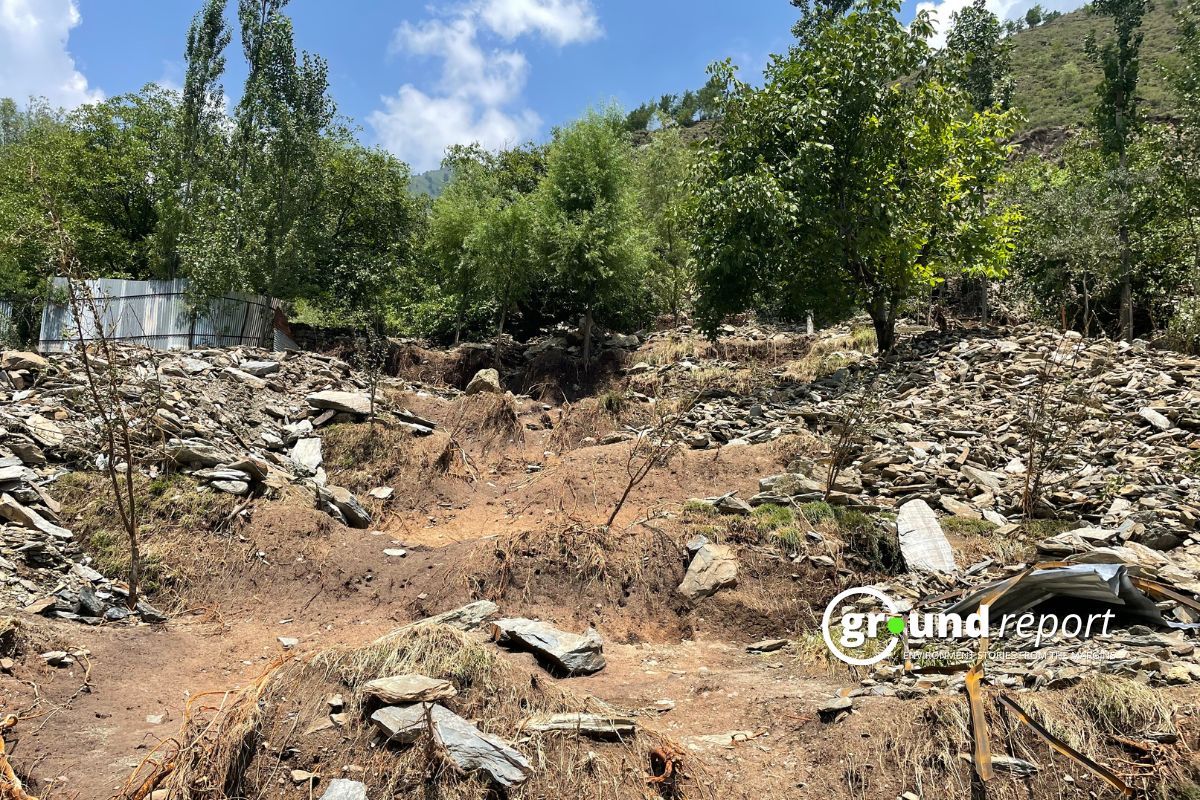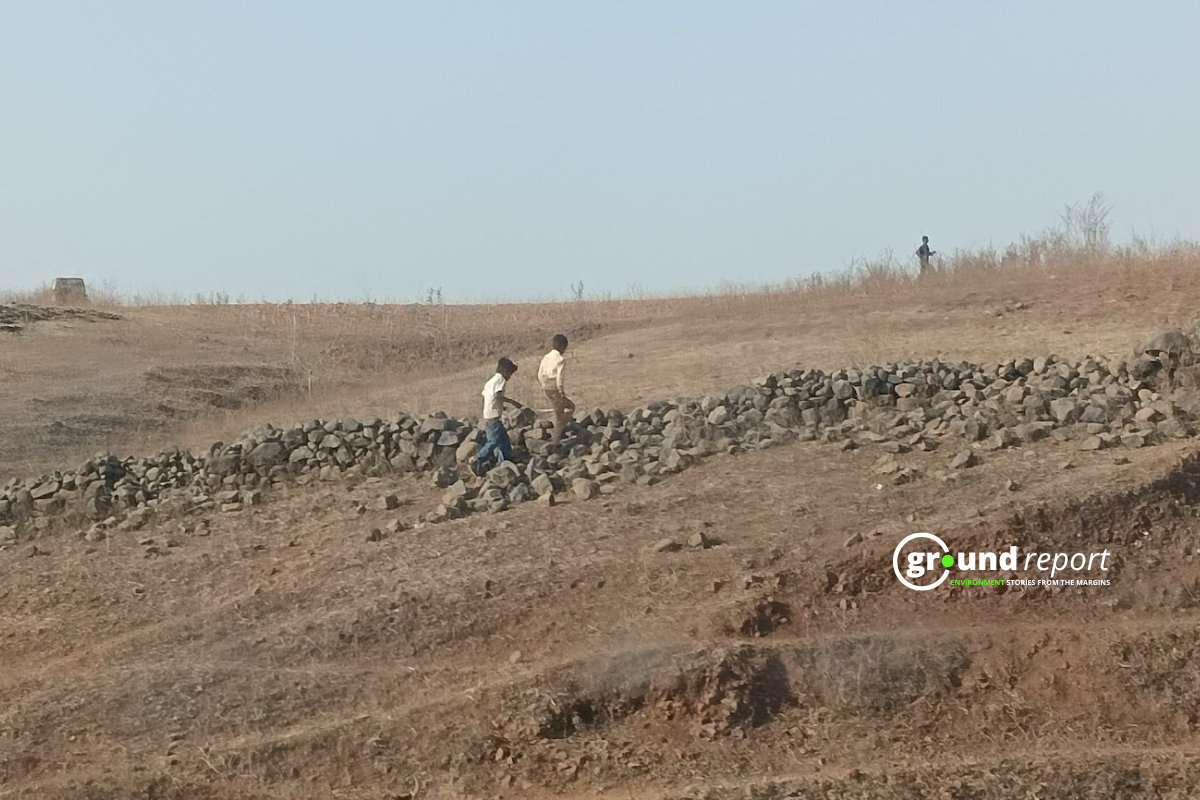Kathmandu (Nepal) | Sitting on the top of the suspension bridge’s pillar above the Trishuli River, which connects villages in Nuwakot District of mountain nation Nepal, he was staring at the solar power panel in sloppy land just above the river. “We are feeling hotter than usual, and it is all because of that solar power plant”, Sainla Mijar, 59, said while pointing a finger to the solar panels on another side of the river and his village Bidur Municipality-4, Simchaur, some 70km North of Capital city Kathmandu.
“I have lived here for more than 30 years but in recent years after this solar power plant, we have been feeling boiling hot at this time of year (last week of February 2023). Imagine what will happen in the coming months.”
Trishuli Solar Power Plant is a major solar power project in Nepal with a capacity of 25 Megawatt. It has been under construction and producing energy since last January. In addition, helps one of the oldest hydropower plants on the Trishuli River during peak-hour demand. However, locals are not happy with solar power plants. They claim that the installation of solar panels has resulted in temperature rise and they feel hotter in the summer than before.
“A few years ago, it was not hot like this; after this (solar panels) situation got changed, we are feeling hot even in early spring.”, Urmila Tamang, 36, stressed, “Everyone in the village says this is because of the solar plant.” Locals of all ages, genders, and socioeconomic backgrounds believe they are feeling prolonged hot days, but officials are unaware of it.
“It is not on our list of things to address.”
It is important to note that there is no established proof to support that solar panels are causing a temperature rise in the surrounding area. This is a clear case of misinformation.
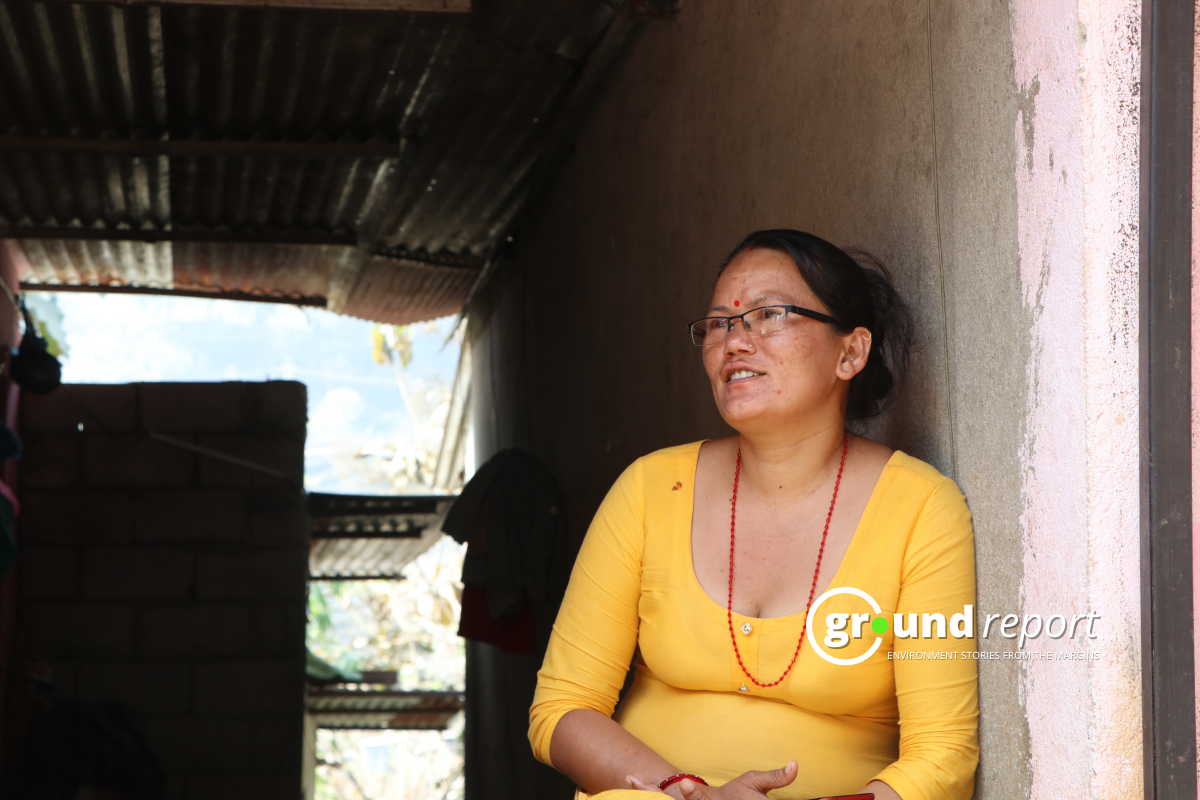
Urmila Tamang, 36, in her house, who also claims she is feeling hotter than usual after the installation of solar planes.
Nepal, Solar Energy and misinformation
Solar energy is one of the sources of electricity needed to maintain sustainable energy demand and tackle the threat posed by climate change. Nepal targets to produce 15,000MW of energy by 2030. Of this, up to 10 per cent will be generated from mini- and micro-hydro power, solar, wind and bio-energy. And, 15% of the total energy demand will be supplied from clean energy sources like solar. In Nepal, hydropower plays a main role in the country’s electricity, according to the Nepal Economic Forum, 96.2% of the installed capacity is hydropower, 3.7% is thermal, and 0.1% is solar.
The Trishuli Solar power plant is seen as the first major step to promote clean energy and could lower the pressure on mostly runoff river-based hydropower projects as a source of energy. In a time when glaciers are melting at a fast rate i.e. in the long run, water flow in the rivers may decrease, impacting energy production of runoff river-based hydropower projects.
However, the problem is that responsible authorities and government policies need to be made aware of most of the climate-related misinformation. “In our current policy climate change-related misinformation, especially around green energy like solar power, we haven’t identified any issues”, Dr. Buddi Sagar Poudel, Joint Secretary & Chief of Climate Change Management Division, said, “We are not able to say anything about how we are going to address local people’s concerns on the matter of solar plant and temperature rise.” This knowledge gap is fueling the spread of untested or unverified information in villages like Gauribeshi and Simchaur and local community members, for instance. Urmila Tamang said,
“No one came to our village to inform about the solar power plant and its role on rising temperature.”
Yet, the Nepal Electricity Authority (NEA) and the Alternative Energy Promotion Center (AEPC) don’t know what the general public is thinking about one of their major solar power plants or ‘how misconceptions of temperature rise caused by solar panels’ are spreading. “We are not aware of the matter”, Nawa Raj Dhakal, Executive Director of the AEPC, added, “We haven’t prioritized identifying and tackling possible misinformation around alternative energy like solar power. It is not on our list of things to address. It may only be a rumor; we don’t know the facts and science now, We will see.”
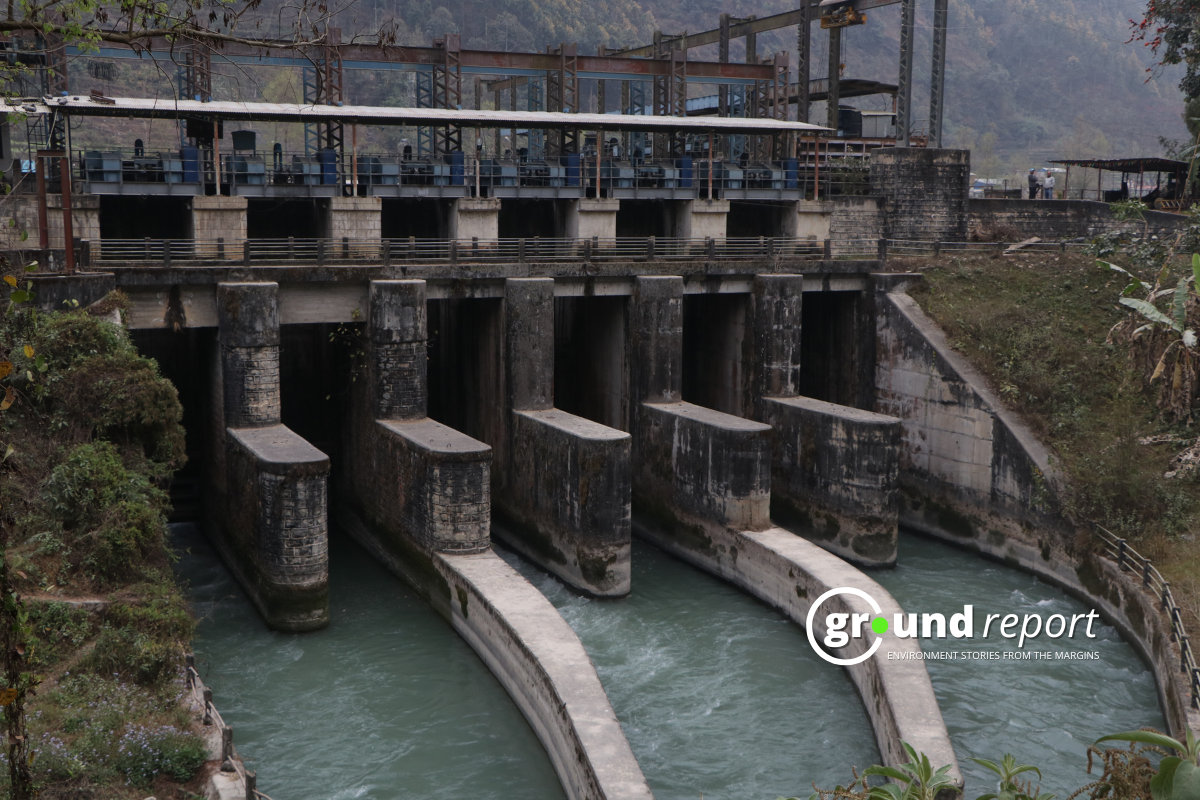
Trishuli Hydropower dam station
What science says: is there any connection?
Science is clear on how to mitigate anthropogenic climate change. Hence, renewable energy technologies are being scaled up, especially solar photovoltaic power. However, trust issues with new technology could hamper the target of going towards a renewable energy path.
Scientists are not sure whether the concern or agitation expressed by locals in Nuwakot has any merits. No proven science could suggest solar power plants can cause temperature rise in nearby areas. According to Dr Sunil Prasad Lohani, Associate Professor at Kathmandu University, the temperature may be higher by a few degrees in the place where the solar panels are installed in large numbers. “But that does not extend to the community. Only the place where the panels are can be like a heat island”, Dr. Lohani, who also Leads the Renewable and Sustainable Energy Laboratory at KU, added, “Because the black surface inside the solar photovoltaic can absorb the radiation. It was like a black body for that particular area, not to the community.”
An article Published in Nature also suggested the possibility that larger solar power plants increase local temperatures because “PV plants alter the way that incoming energy is reflected back to the atmosphere or absorbed, stored, and reradiated because PV plants change the albedo, vegetation, and structure of the terrain.” This research was done in Arizona, USA, by Mitchell A. Pavao-Zuckerman, Associate Professor at the University of Maryland’s College of Agriculture and Natural Resources, and colleagues from the University of Arizona, University of Madison-Wisconsin, and the Nevada Center of Excellence in 2016. The result says the added heat dissipates quickly and can’t be measured 100 feet away from the power plants.
The basic science is that solar PV panels absorb the sunlight and convert it into energy. “Currently, the version efficiency of the solar PV panel ranges from, about 15% to 20%, which means not all energy absorbed is converted into electricity and what is not converted is dissipated around it as heat.”, Mewang Gyeltshen, Program Coordinator at the International Center for Integrated Mountain Development (ICIMOD), said, “this might give a small raise of temperature around the solar panels but not a significant level to be concerned off.” However, there needs to be more research in Nepal to connect the dots between locals’ claims of feeling hotter due to solar plants. Or, awareness drives to tackle the misinformation and build trust for renewable energy.
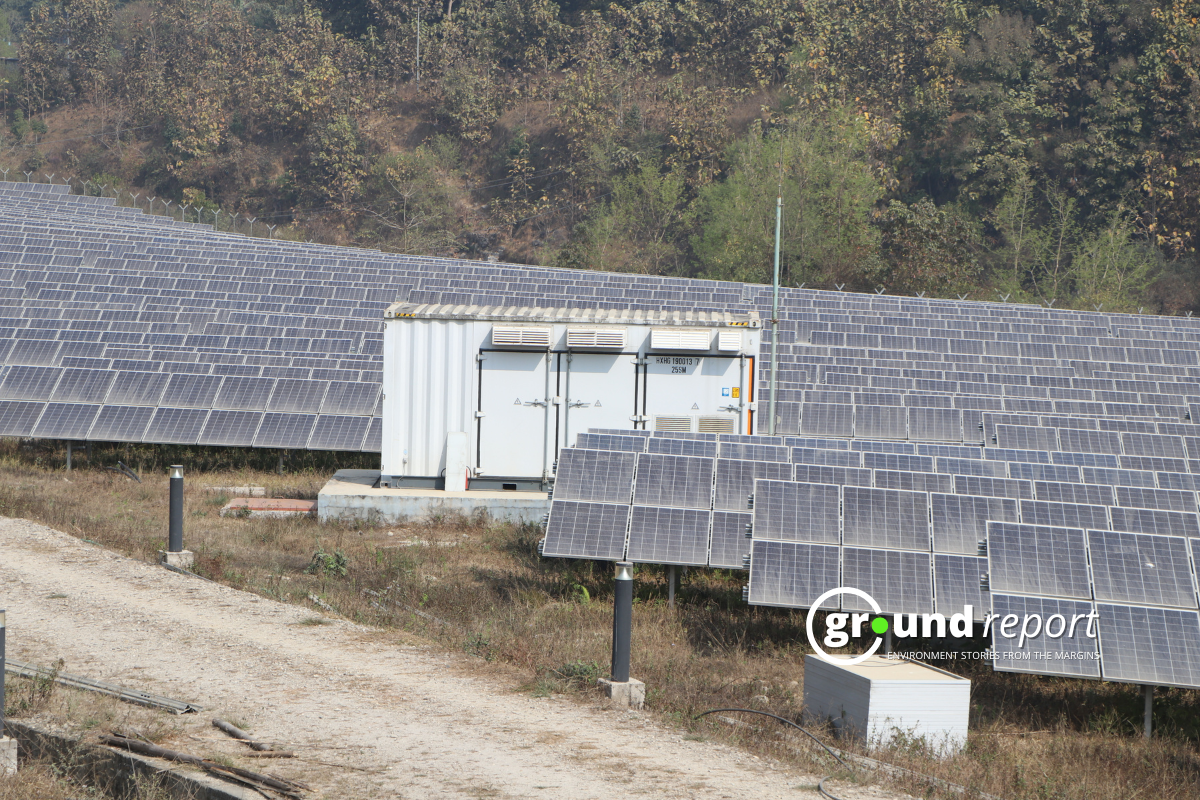
So, what could be the solution to this misconception?
A clear gap in authentic information to locals is visible because NEA and AEPC are not there to address concerns. On the other hand, villagers are feeling agitated by what they are hearing from each other. “Solar is relatively new to Nepal where hydropower is dominant; it will take some time to be fully accepted,” Prof. Dr Lohani said, “For this, we need to disseminate science-based information at the local level. Sadly, our policy didn’t cover this yet.” Furthermore, the solution could be to go for higher-efficiency solar panels, but the cost-benefit may need to be weighed. “For the ground-mounted solar PV panels, the temperature may be insignificant as the air circulation would fan it out any heat generated,” ICIMOD’s Gyeltshen added, “Even for roof-mounted solar panels, enough gap will have provided between the solar panel and the roof to allow air circulation.”
Including the Trisuli Solar Power plant, almost all solar panels are ground mounted in Nepal. To incorporate science and local livelihood together, Agrivoltaic solar will be a good option, according to experts. “If we move to Agrivoltic, there will be an opportunity to grow shade-loving crops while having solar panels.” Prof. Dr. Lohani, who researched solar power capacity in Nepal explained, “This approach will be appropriate for us to move ahead to energy security without having objection or fear from the local community.”
Support us to keep independent environmental journalism alive in India.
Keep Reading
What is Green Hydrogen? Could it change energy in South Asia?
Blue hydrogen is worst for climate: study
How Increasing space traffic threatens ozone layer?
Hydro Fuel Market: India’s current scenario and the future ahead
Natural Gas is a Misleading term, It is not Natural and clean at all
Follow Ground Report on X, Instagram and Facebook for environmental and underreported stories from the margins. Give us feedback on our email id greport2018@gmail.com.
Don’t forget to Subscribe to our weekly newsletter, Join our community on WhatsApp, and Follow our YouTube Channel for video stories.




